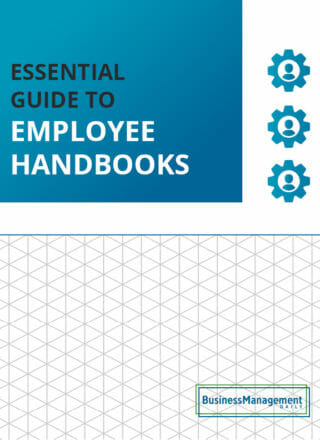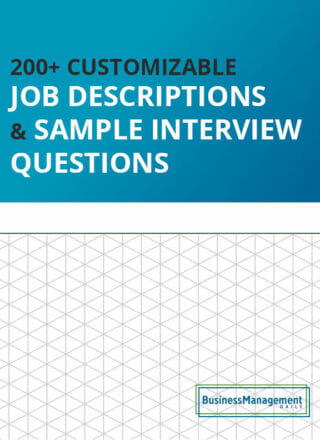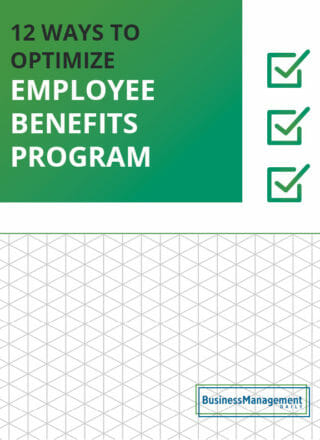Employee attendance issues and how to address them
The importance of consistent employee attendance
Regular employee attendance is essential for keeping your business running. Most small and medium-sized businesses have just enough staff to keep business operations running smoothly, and poor attendance can significantly disrupt key business functions.
Excessive employee absences or tardiness can lead to negative customer experiences, hurt employee productivity, and put undue work and pressure on the team members who show up daily. As such, you’ll want to do your best to ensure employees abide by their work schedules and show up on time.
While some absences, such as sick leave, can’t be avoided, there are plenty of steps that you can take to improve employee attendance within your organization.
Find out how to create clear attendance expectations, maintain more detailed attendance data, and work with employees to improve their attendance.
Common employee attendance issues
Explore the top three workplace employee attendance issues that you need to be cognizant of in your workplace.
Excessive absenteeism
Excessive absenteeism is an attendance problem that occurs when employees accrue a large number of unexcused absences (also known as unapproved absences). Every manager runs into unreliable employees who demonstrate excessive absenteeism at some point.
These employees frequently call off work at the last minute when they aren’t sick or fail to submit vacation and time off requests through the proper channels to get them approved.
Remember that not all circumstances should be considered excessive absenteeism. An employee taking intermittent medical leave under the Family and Medical Leave Act (FMLA) may have many absences, but those are approved and federally protected absences. Employers should always dig into an employee’s attendance history and look at the causes of the absences before considering disciplinary action for excessive absenteeism.
Tardiness
Employees arriving late or tardy is generally less disruptive than absenteeism, but it’s still not ideal for businesses. An employee arriving late can disrupt morning meetings, create service delays for customers, or result in reception desks or phone lines being opened late.
Managing employee tardiness will typically vary based on your business and location. Suppose your business is located in the busy downtown area of a large city.
In that case, periodic employee tardiness may be inevitable as employees rely on public transportation, which may cause unexpected delays. If you have a remote team, there are no traffic or transit delays to worry about, so you may expect a higher degree of punctuality.
Employers need to work to find the right approach to this attendance issue for their business. Some employers like to be more flexible and relaxed, while others may have less tolerance for tardiness.
Improper clock-ins or time tracking
This is arguably the most serious employee attendance issue. Intentional improper time tracking can be a form of time theft and fraud. Employees might engage in buddy punching, which means having a coworker clock in or out for them.
They might also falsify their timesheets. These employees are dishonest and cost the business money. In many cases, these attendance issues may be grounds for termination.
How to improve employee attendance in the workplace
Employee attendance can be a big issue, but you can tackle it by taking these simple steps to improve employee attendance.
Develop a clear attendance policy (and stick to it)
As with all company policies, writing your attendance policy and making it available to all employees is essential. Most employers choose to include the attendance policy in their employee handbook. This policy should set up transparent expectations for employee attendance.
Start by detailing your expectations that employees arrive on time and complete their scheduled work hours daily. Then, explain your expectations surrounding absences. Share how much advance notice you’d like for scheduled absences, such as vacation time, and any request procedures or details on how requests are processed (i.e., is it first-come-first-serve or by seniority?).
Guidelines should also be in place for reporting unplanned absences, such as sick days. The goal of this policy is for employees to have enough information to communicate any planned or unplanned absences appropriately and to understand employer expectations regarding consistent attendance.
If you haven’t written a solid policy yet, check out our employee attendance policy template as a starting point.
Offer flexibility where possible
Providing flexibility in employee scheduling and work options can make all the difference in improving employee attendance. Often, employees are late because their scheduled start time does not work well with their children’s school schedule or the public transit schedule for their route.
Encourage employees to come to you to request scheduling adjustments and do your best to accommodate them when it does not cause undue hardship to the business.
After all, it’s typically better to have an employee arrive reliably at 8:30 AM rather than inconsistently at 8 AM, so adjusting employee hours is an option that should be considered.
It can also be helpful to provide flexibility regarding working from home. Employees who are sick should be able to take time off to rest fully, but remote work may be a good alternative to absences in some circumstances.
Employees have kids. They might be willing to work remotely while they stay home with a sick child. They would do this rather than call out of work if they knew management would understand. Management should understand if they need to step away occasionally.
Show that you are willing to work with your employees to find compromises that accommodate their needs and business needs. You’ll likely have better overall employee attendance and better communication around attendance matters.
Have a solid attendance tracking system
Small to medium-sized businesses don’t always want to invest in time clocks or time-tracking software for their teams. This is understandable as the pricing of such solutions can be a bit high.
However, it’s best to have a daily attendance management system to track employee attendance. If you rely on self-reporting through manual timesheets, it can be tough to maintain clear attendance records and know who is coming in late each day.
Consider leveraging a low-cost attendance software system such as HubStaff or Clockify or checking with human resources to see if the company’s overall HR software includes a time-tracking feature. For remote or hybrid teams, you can also implement a good morning check-in via Microsoft Teams or Slack.
Using a more detailed attendance system allows you to access up-to-date and real-time records of employees’ time. For busy managers, this makes it easier to identify attendance patterns such as increased tardiness so that these issues can be addressed promptly.
Using an easy digital attendance software can also make time off requests and approvals easier for both parties. Streamline vacation or time off approvals by setting up automated notifications when requests occur so managers can process and approve them promptly.
When employees know how to request time off, and managers track and respond to requests promptly, it is easier to minimize unexcused absences and track excused absences.
Be cognizant of burnout
Employee burnout can be a substantial contributing factor to employee attendance. The World Health Organization defines burnout as a form of chronic work stress that has not been effectively managed.
It is characterized by excessive exhaustion or fatigue, reduced employee productivity, and a more negative outlook toward one’s job or profession. Standard work breaks such as two-day weekends may not be enough to recharge burned-out employees, causing them to call out sick more frequently.
Every manager should be trained on proper workload distribution practices to ensure they aren’t overloading certain team members and causing burnout. This will reduce burnout-related absences.
It’s also a good idea to create an open dialogue about burnout in the workplace. Encourage employees to talk to their managers if they are beginning to feel burned out.
Managers may also want to encourage employees feeling burned out or under more stress at work than usual (such as working on a big, important project) to schedule time off to recharge.
Encouraging them to plan and request time off during busy seasons or after high-pressure projects can help reduce unplanned, last-minute absences due to burnout or exhaustion.
Prioritize employee engagement
Employee disengagement is also a common contributing factor to increased absenteeism or poor attendance. If you’ve noticed an overall downward trend in employee attendance within your team, now may be the time to send out an employee engagement survey and assess whether disengagement may be a factor.
A survey is a great way to learn more about what employees want. It also helps you know how to improve attendance. You can achieve this by boosting job satisfaction. Once the data comes in, you can create a game plan.
This plan will address any areas leading to a lack of engagement. Poor management communication or a lack of workplace recognition could be the culprits.
Another issue might be unreasonable workloads, inadequate compensation, or other issues plaguing your employees.
Recognize good attendance
Don’t just focus on the employees exhibiting poor attendance; it’s also important to acknowledge those who show up on time and consistently.
Be sure to highlight exceptional attendance and timeliness during employee performance reviews and thank workers.
These workers have been consistently showing up, even during busy or high-stress periods at work. They may have picked up the slack for absent employees recently.
Showing them that their hard work and great attendance do not go unnoticed will encourage continued good attendance.
However, you will want to be careful. You should be cautious about offering specific incentives for attendance. You can include attendance in performance management discussions.
Also, acknowledge that more reliable and timely employees may have a better chance at promotions and raises.
This is one way to incentivize good attendance. Ensure those with protected excused absences know they aren’t being penalized. Examples of protected absences include FMLA leave.
On the other hand, perfect attendance awards or bonuses tend to have negative consequences such as burnout. The goal shouldn’t be zero absences, as you want employees to rest when needed and avoid coming to work while sick and spreading their illness to others.
Address attendance issues early
Many small businesses maintain fairly relaxed work cultures or simply can’t micromanage employee attendance. However, this can lead to minor employee attendance problems growing worse.
For example, if your employees realize that management will not address minor tardiness, they may stop working as hard to arrive on time.
This tends to catch on throughout the employee population as they notice their peers arriving late without consequences. Eventually, many of your staff may regularly show up late in the mornings.
Address any attendance issues and patterns you observe early on. This doesn’t mean you should immediately write up an employee. Instead, take time to check in and have a conversation with them.
Discuss the increased tardiness or absenteeism. Sometimes, a simple conversation can help you uncover the root cause of the attendance issue and find a solution.
If that initial conversation doesn’t work, you may need to advance to more formal warnings. Disciplinary action might also be necessary. Have these check-ins early on. Then, provide verbal warnings if required.
Don’t wait until the attendance problem increases or the employee has developed bad habits. Turning things around after the first few tardies will be easier. It’s easier than trying to fix the attendance issue after it has gone on for weeks or months.
More resources:
Employee attendance write up sample
How to define and address excessive absenteeism at work
Excused vs unexcused absences from work and how to handle them
Want more insights like these? Visit Kaylyn McKenna’s author page to explore her other articles and expertise in business management.






